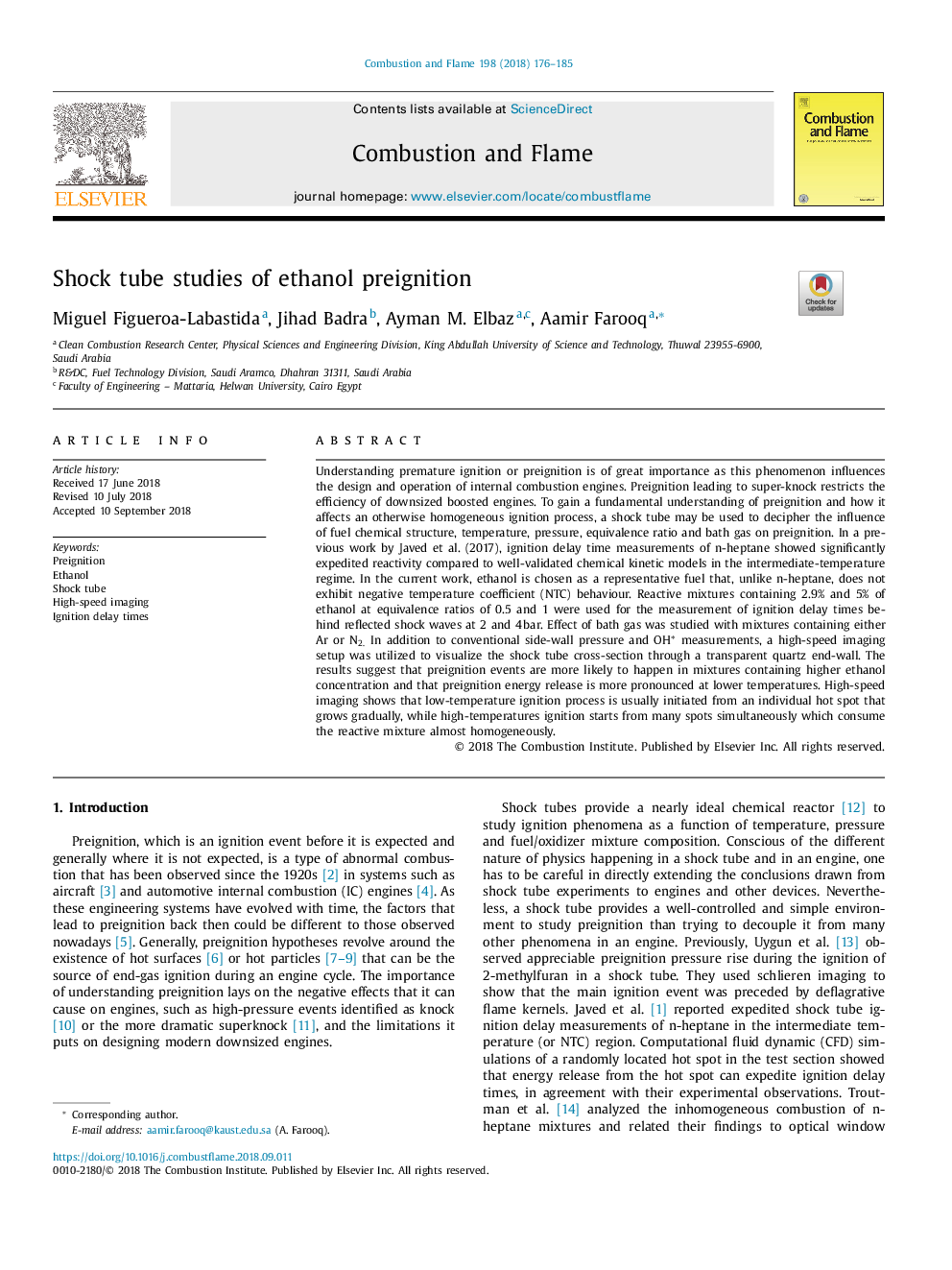| کد مقاله | کد نشریه | سال انتشار | مقاله انگلیسی | نسخه تمام متن |
|---|---|---|---|---|
| 11024444 | 1701155 | 2018 | 10 صفحه PDF | دانلود رایگان |
عنوان انگلیسی مقاله ISI
Shock tube studies of ethanol preignition
ترجمه فارسی عنوان
مطالعات لوله شوک بر روی اتانول
دانلود مقاله + سفارش ترجمه
دانلود مقاله ISI انگلیسی
رایگان برای ایرانیان
کلمات کلیدی
پیشگویی، اتانول، لوله شوک، تصویربرداری با سرعت بالا، زمان تأخیر
موضوعات مرتبط
مهندسی و علوم پایه
مهندسی شیمی
مهندسی شیمی (عمومی)
چکیده انگلیسی
Understanding premature ignition or preignition is of great importance as this phenomenon influences the design and operation of internal combustion engines. Preignition leading to super-knock restricts the efficiency of downsized boosted engines. To gain a fundamental understanding of preignition and how it affects an otherwise homogeneous ignition process, a shock tube may be used to decipher the influence of fuel chemical structure, temperature, pressure, equivalence ratio and bath gas on preignition. In a previous work by Javed et al. (2017), ignition delay time measurements of n-heptane showed significantly expedited reactivity compared to well-validated chemical kinetic models in the intermediate-temperature regime. In the current work, ethanol is chosen as a representative fuel that, unlike n-heptane, does not exhibit negative temperature coefficient (NTC) behaviour. Reactive mixtures containing 2.9% and 5% of ethanol at equivalence ratios of 0.5 and 1 were used for the measurement of ignition delay times behind reflected shock waves at 2 and 4â¯bar. Effect of bath gas was studied with mixtures containing either Ar or N2. In addition to conventional side-wall pressure and OH* measurements, a high-speed imaging setup was utilized to visualize the shock tube cross-section through a transparent quartz end-wall. The results suggest that preignition events are more likely to happen in mixtures containing higher ethanol concentration and that preignition energy release is more pronounced at lower temperatures. High-speed imaging shows that low-temperature ignition process is usually initiated from an individual hot spot that grows gradually, while high-temperatures ignition starts from many spots simultaneously which consume the reactive mixture almost homogeneously.
ناشر
Database: Elsevier - ScienceDirect (ساینس دایرکت)
Journal: Combustion and Flame - Volume 198, December 2018, Pages 176-185
Journal: Combustion and Flame - Volume 198, December 2018, Pages 176-185
نویسندگان
Miguel Figueroa-Labastida, Jihad Badra, Ayman M. Elbaz, Aamir Farooq,
